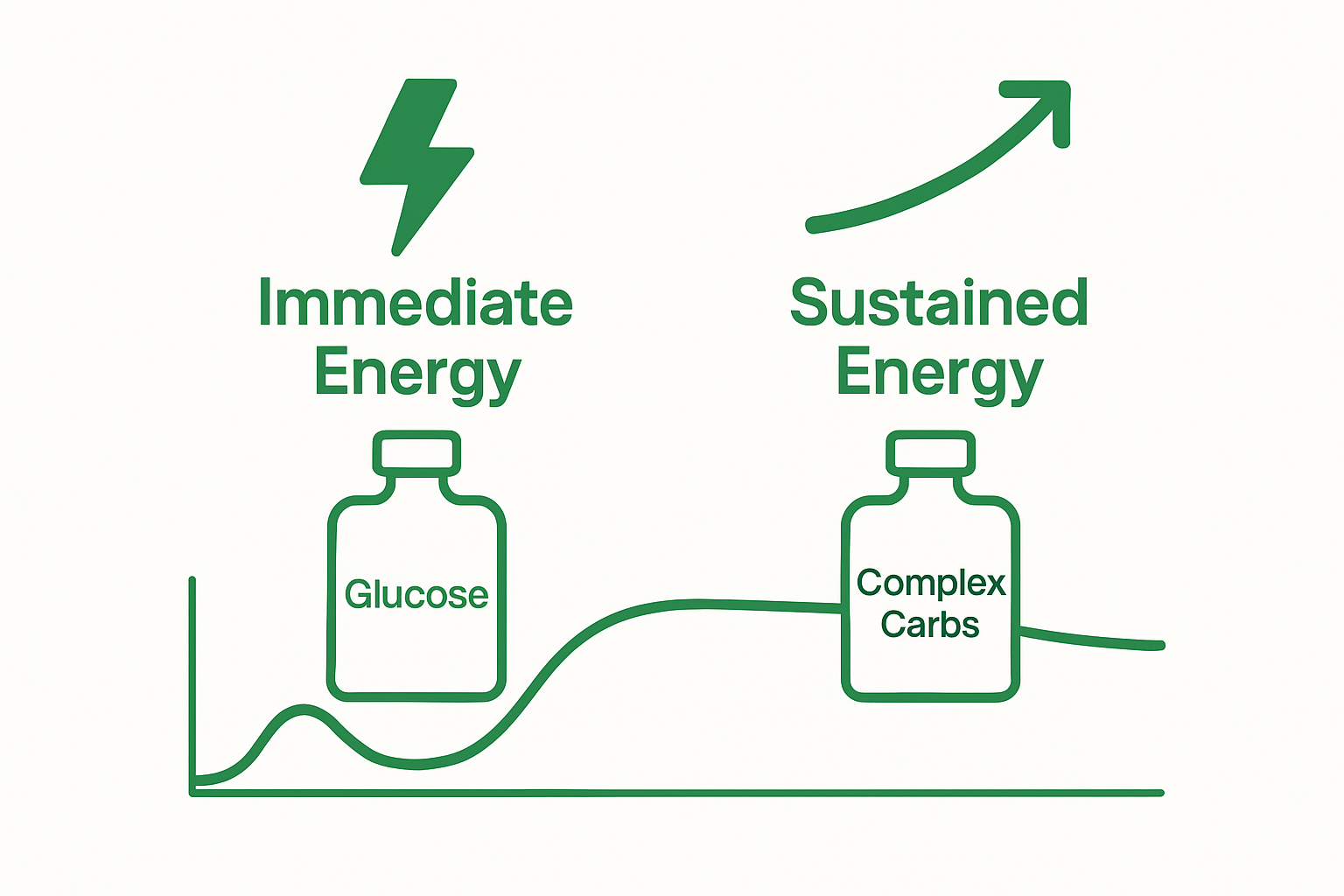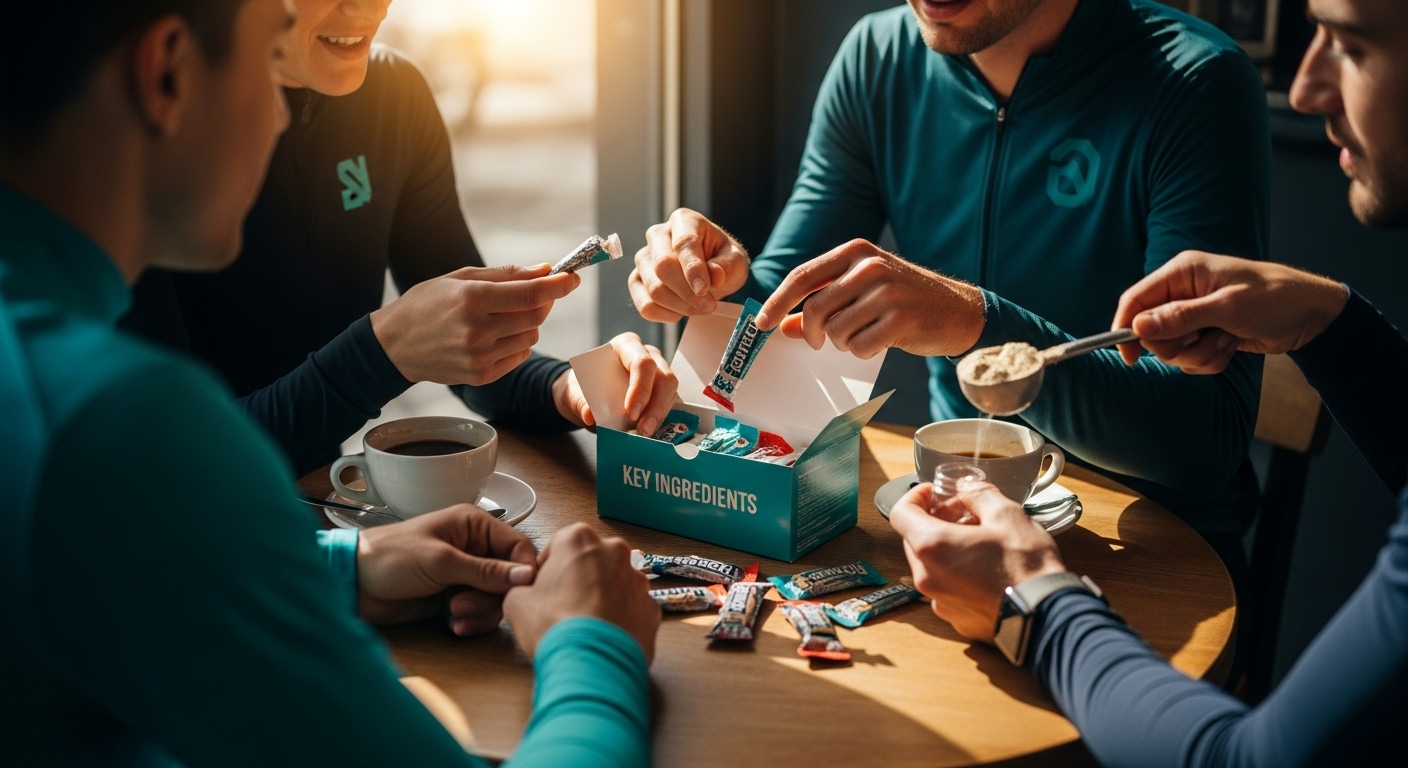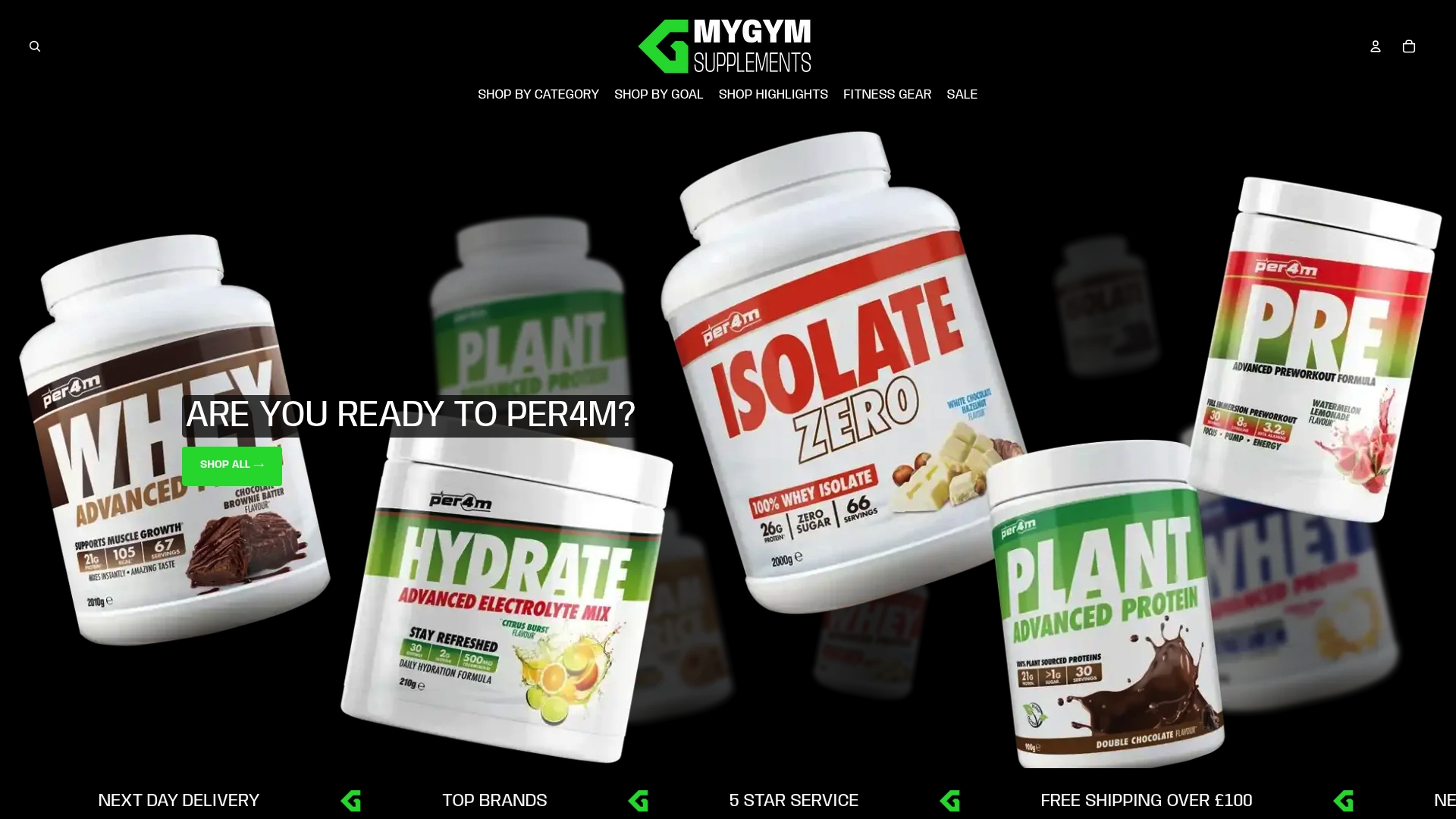Endurance sports demand more than just grit and determination. For many athletes, staying energised is the real battle. But while most people reach for bananas or energy bars, elite performers are turning to small packets with a punch. Some energy gels can increase intermittent endurance capacity by over 20 percent according to recent studies. Forget bulky snacks. These gels pack science and performance into every drop, changing how athletes fuel up on the go.
Table of Contents
- Defining Energy Gels: A Quick Introduction
- The Importance of Energy During Exercise
- How Energy Gels Provide Sustained Fuel
- Key Ingredients Found in Energy Gels
- Real-World Use: Energy Gels in Sports and Fitness
Quick Summary
| Takeaway | Explanation |
|---|---|
| Energy gels provide rapid energy | These supplements deliver concentrated carbohydrates for quick access to energy during physical activities. |
| Consume gels during long events | Best utilised during activities lasting over 60-90 minutes to maintain energy levels. |
| Stay hydrated with gel intake | Drink water while consuming gels to aid absorption and prevent gastrointestinal discomfort. |
| Experiment with different brands | Test various energy gel formulations during training to determine individual tolerance and effectiveness. |
| Timing is key for effectiveness | Consume gels 15-45 minutes before anticipated energy depletion to maximize benefits. |
Defining Energy Gels: A Quick Introduction
Energy gels represent a concentrated nutritional supplement designed to provide athletes and fitness enthusiasts with rapid, easily digestible energy during high-intensity physical activities. These compact, portable packets contain a precise blend of carbohydrates, electrolytes, and sometimes additional performance-enhancing ingredients that can be quickly consumed to sustain endurance and prevent energy depletion.
The Nutritional Composition of Energy Gels
At their core, energy gels are engineered to deliver a swift surge of glucose into the bloodstream. Research from the University of Edinburgh found that carbohydrate gel ingestion significantly improves intermittent endurance capacity, making them particularly valuable for athletes engaged in prolonged or intense physical activities.
Typical energy gels contain:
- Simple and complex carbohydrates for immediate and sustained energy release
- Electrolytes to support hydration and muscle function
- Minimal protein content
- Optional additives like caffeine or amino acids for enhanced performance
When and How to Use Energy Gels
Understanding the optimal timing and method of consuming energy gels is crucial for maximising their effectiveness. These concentrated energy sources are most beneficial during endurance events lasting over 60-90 minutes, such as marathon running, long-distance cycling, or extended training sessions.
Athletes typically consume energy gels with caffeine approximately 15-45 minutes before anticipated energy depletion, allowing the body to process and utilise the nutrients efficiently. The recommended consumption is usually one gel packet every 45-60 minutes during prolonged physical activity, accompanied by adequate water intake to support absorption and prevent potential gastrointestinal discomfort.
The Importance of Energy during Exercise
During physical activity, the human body requires a strategic and efficient energy management system to sustain performance, prevent fatigue, and support overall physiological functions. Energy is the fundamental currency of exercise, determining an athlete’s capacity to perform, recover, and progress in their fitness journey.
Metabolic Demands of Physical Activity
Research from the University of Oxford indicates that carbohydrate ingestion during exercise significantly enhances carbohydrate oxidation rates, which directly impacts an individual’s ability to maintain intense physical performance. The body’s energy systems operate through complex metabolic pathways that convert stored nutrients into usable fuel for muscular contractions and sustained movement.
Key energy utilization mechanisms include:
- Immediate ATP energy system for short, explosive movements
- Glycolytic system for moderate intensity activities
- Oxidative system for prolonged endurance activities
- Fat and carbohydrate metabolism as primary energy sources
Physiological Impact of Energy Depletion
When energy reserves become insufficient, athletes experience a phenomenon known as ‘hitting the wall’ or ‘bonking’ - a sudden and dramatic reduction in performance capacity. This occurs when muscle glycogen stores are critically low, leading to rapid fatigue, decreased muscle recruitment, and potential cognitive impairment.
To prevent energy depletion, athletes must strategically replenish their energy stores through targeted nutritional interventions. Learn more about nutritional strategies that support sustained energy production and metabolic efficiency during intense physical activities.
Understanding and managing energy dynamics is crucial for athletes across all disciplines, from high-intensity interval training to marathon running. By comprehending how the body generates, utilizes, and replenishes energy, individuals can optimize their performance, reduce fatigue, and achieve more consistent and impressive fitness outcomes.
How Energy Gels Provide Sustained Fuel
Energy gels represent a sophisticated nutritional strategy designed to deliver rapid and sustained energy during prolonged physical activities.
 By leveraging precise carbohydrate combinations and rapid absorption mechanisms, these compact supplements provide athletes with a targeted approach to maintaining performance and preventing energy depletion.
By leveraging precise carbohydrate combinations and rapid absorption mechanisms, these compact supplements provide athletes with a targeted approach to maintaining performance and preventing energy depletion.
Carbohydrate Absorption and Energy Delivery
Research from the National Center for Biotechnology Information demonstrates that carbohydrate ingestion during prolonged exercise can significantly enhance endurance performance by maintaining blood glucose levels and delaying fatigue. Energy gels exploit this principle through carefully formulated compositions that enable quick nutrient assimilation.
The energy delivery mechanism involves:
- Rapid glucose absorption through the small intestine
- Immediate blood sugar elevation
- Sustained energy release through complex carbohydrate blends
- Minimized digestive system stress
Glycogen Preservation and Performance Optimization
During intense physical activities, muscles progressively deplete their glycogen stores, which can lead to significant performance reduction. Energy gels function as a strategic intervention, providing an external glucose source that helps preserve muscle glycogen and extend exercise capacity.
Athletes can explore advanced energy supplementation techniques to optimize their nutritional strategies and maintain peak performance throughout demanding training sessions and competitive events.
The effectiveness of energy gels lies in their ability to provide a concentrated, easily digestible energy source that circumvents the potential challenges of solid food consumption during high-intensity activities. By delivering a precise blend of simple and complex carbohydrates, these supplements ensure athletes can maintain their energy levels without experiencing significant digestive discomfort or performance interruption.
Key Ingredients Found in Energy Gels
Energy gels are precision-engineered nutritional supplements designed with a strategic combination of ingredients to maximise performance and support athletic endurance. Understanding the specific components that constitute these powerful supplements is crucial for athletes seeking optimal nutritional support during intense physical activities.
Carbohydrate Composition
The primary ingredient in energy gels is carbohydrates, which serve as the fundamental fuel source for muscular performance. These carbohydrates typically include a blend of fast-absorbing and complex sugars that provide both immediate and sustained energy release.
Key carbohydrate types include:
- Maltodextrin for rapid glucose absorption
- Fructose for additional energy substrate
- Sucrose as a quick energy source
- Complex carbohydrates for prolonged energy delivery
Performance-Enhancing Additives
Scientific research highlights the importance of supplementary ingredients that can enhance the effectiveness of energy gels. Beyond basic carbohydrates, many formulations incorporate additional components designed to support athletic performance and physiological function.
These performance-boosting ingredients might include:
- Electrolytes to support hydration and muscle function
- Amino acids for muscle protein synthesis
- Caffeine to improve mental focus and reduce perceived exertion
- Branched-chain amino acids for muscle recovery
Athletes can explore innovative energy supplementation options that provide targeted nutritional support during demanding physical activities.
The precise combination of ingredients in energy gels reflects a sophisticated approach to nutritional science, balancing rapid energy delivery with sustained performance support. By understanding the role of each component, athletes can make informed choices about their nutritional strategies and optimize their physical potential.
To help you quickly compare the key ingredients commonly found in energy gels and their primary functions, the following table summarises their respective roles for athletes.
| Ingredient | Primary Function | Example Benefit |
|---|---|---|
| Maltodextrin | Rapid glucose absorption | Immediate energy surge |
| Fructose | Alternative energy substrate | Prolonged energy delivery |
| Sucrose | Quick energy source | Quick elevation of blood glucose |
| Complex carbohydrates | Sustained energy release | Delayed fatigue |
| Electrolytes | Support hydration and muscle function | Prevention of cramps |
| Caffeine (optional) | Enhances alertness, reduces perceived exertion | Improved mental focus |
| Amino acids (optional) | Muscle protein synthesis and recovery | Supports muscle maintenance |

Real-World Use: Energy Gels in Sports and Fitness
Energy gels have transformed nutritional strategies across multiple sporting disciplines, providing athletes with a convenient and efficient method of maintaining energy levels during prolonged physical activities. Their compact design and rapid absorption make them an essential tool for endurance athletes seeking to optimize performance and manage energy expenditure.
Sport-Specific Application Strategies
Research published in the journal Nutrients demonstrates that carbohydrate supplementation through energy gels can significantly enhance performance, postpone fatigue, and support cognitive function during endurance activities lasting over an hour. Different sports require nuanced approaches to gel consumption based on specific physiological demands and activity duration.
Typical sport-specific usage includes:
- Marathon running: Consuming one gel every 45-60 minutes
- Cycling: Integrating gels during long-distance rides
- Triathlon: Strategic gel intake across swimming, cycling, and running stages
- Ultra-endurance events: Consistent energy management throughout extended periods
Practical Considerations and Best Practices
Successful energy gel implementation requires understanding individual tolerance, proper hydration, and precise timing. Athletes must experiment with different brands and formulations to identify the most suitable products for their specific metabolic needs.
Practical recommendations involve:
- Practicing gel consumption during training, not just competitions
- Drinking water alongside gel intake to facilitate absorption
- Understanding personal digestive response to different gel compositions
- Gradually introducing gels into nutritional strategy
Athletes can explore advanced performance supplementation techniques to further refine their nutritional approach and maximize athletic potential.
The versatility of energy gels extends beyond professional athletics, offering recreational fitness enthusiasts a scientifically formulated method of sustaining energy during challenging workout sessions.
This table provides an at-a-glance comparison of typical sport-specific strategies for using energy gels, supporting athletes seeking optimal fuelling methods for different endurance disciplines.
| Sport/Activity | Typical Gel Usage Strategy | Key Consideration |
|---|---|---|
| Marathon running | One gel every 45-60 minutes | Timing intake to training/race pace |
| Cycling | Integrate gels during long-distance rides | Access during riding, hydration focus |
| Triathlon | Use strategically across all event stages | Transition timing and portability |
| Ultra-endurance | Consistent gel intake throughout event | Ongoing energy management |
| High-intensity training | Gel intake before and during long sessions | Assess personal digestive tolerance |
Ready to Keep Your Energy High and Your Performance Strong?
Feeling your energy dip during a tough workout or long run can be frustrating, especially when you have trained hard and know your goals. As explained in the article, energy depletion does more than slow you down—it impacts focus, motivation and recovery. Many athletes struggle with choosing the right supplements or worry about digestive distress with on-the-go nutrition, particularly during endurance events.

At MyGymSupplements.shop, we understand these struggles. Our carefully selected energy solutions help you stay fuelled, alert and in control of your performance. Every product is designed to deliver carbohydrates, electrolytes and other key nutrients quickly and efficiently, just as outlined in the article’s advice on real-world use and ingredient innovation.
Why wait for another energy crash or underwhelming session? See how our high-quality supplements can help you sustain energy and reach your athletic potential. Visit our homepage now to explore top-reviewed picks, best sellers and breakthrough products for every training goal. Take charge of your performance with trusted nutrition—shop now and feel the difference in your next session.
Frequently Asked Questions
What are energy gels?
Energy gels are concentrated nutritional supplements designed to provide athletes with rapid, easily digestible energy during high-intensity physical activities. They typically contain a blend of carbohydrates and electrolytes to support endurance and prevent energy depletion.
When should I consume energy gels during exercise?
Energy gels are most effective during endurance events lasting over 60-90 minutes. Athletes usually consume one gel every 45-60 minutes, ideally 15-45 minutes before anticipated energy depletion, accompanied by water to aid absorption.
How do energy gels help with energy depletion?
Energy gels provide a concentrated source of glucose that helps maintain blood sugar levels and prevents rapid fatigue. They support muscle glycogen preservation, allowing for extended exercise capacity during intense physical activities.
What ingredients are commonly found in energy gels?
Energy gels often contain a mix of simple and complex carbohydrates for immediate and sustained energy release, electrolytes for hydration, and optional performance-enhancing additives like caffeine or amino acids to support athletic performance.
Recommended
- VYPER Caffeine Gum - The Smart, Chewable Energy Solution for Life on the Move 🚀 – MyGymSupplements
- What Are Hydration Tablets? Understanding Their Benefits – MyGymSupplements
- What are Greens Powders? Understanding Nutritional Benefits – MyGymSupplements
- 7 Essential Tips for Using Performance Enhancement Supplements – MyGymSupplements



0 comments